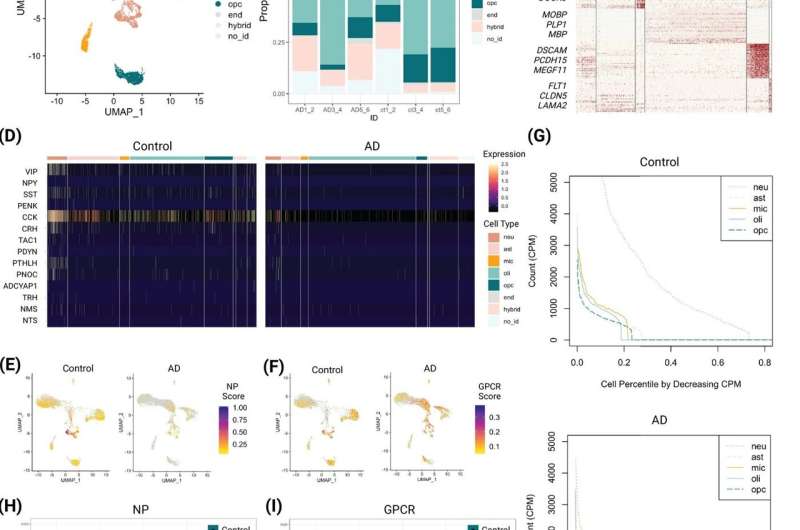This article has been reviewed according to Science X's editorial process and policies. Editors have highlighted the following attributes while ensuring the content's credibility:
fact-checked
trusted source
proofread
Research indicates clues to early detection and prevention of Alzheimer's disease

Alzheimer's disease is the most common neurodegenerative disease in people over 65 and affects more than 50 million people worldwide—a number that is expected to double in 20 years. University of Minnesota scientists are examining how specific cellular activity in the brain may increase vulnerability to Alzheimer's, with findings that could offer new avenues for early detection and treatment.
In a study recently published in Alzheimer's & Dementia, College of Veterinary Medicine researchers Manci Li and Assistant Professor Peter Larsen looked at existing data from both Alzheimer's brains and healthy brains to identify the key neuropeptides—the chemical messengers that are released by neurons—involved in Alzheimer's. They also examined the relationship between neuropeptide activity and aging.
The study found:
- The proportion of cells releasing neuropeptides was significantly lower in Alzheimer's brains than in healthy brains.
- Neurons with the most neuropeptide activity—those releasing higher levels and greater diversity of neuropeptides—were disproportionately absent in Alzheimer's brains.
- Increased age coincides with decreased neuropeptide activity in the hippocampus of Alzheimer's brains, affecting an area of the brain that plays a major role in learning and memory.
"In a healthy brain, there are cells that can handle the demands of day-to-day life. But with Alzheimer's, these cells have either died or the connections are lost, and the cells that are left behind are struggling to keep up with the demand," said Li. "It's akin to an engine that is overworked—when the power demands are too large the engine cannot sustain the demand and beaks down."
The researchers believe this cycle of neurons overworking and breaking down contributes to the onset and progression of Alzheimer's. While further research is needed, understanding the involvement of neuropeptides in Alzheimer's offers promising avenues for early diagnosis by measuring neuropeptide activity. The study also suggests treatment possibilities that could prevent cognitive decline by simulating the effects of neuropeptides.
Upcoming research will focus on investigating neuropeptide disruption during the earliest stages of the disease, an effort that could lead to preventative treatments.
More information: Manci Li et al, Single‐cell sequencing of entorhinal cortex reveals widespread disruption of neuropeptide networks in Alzheimer's disease, Alzheimer's & Dementia (2023). DOI: 10.1002/alz.12979



















